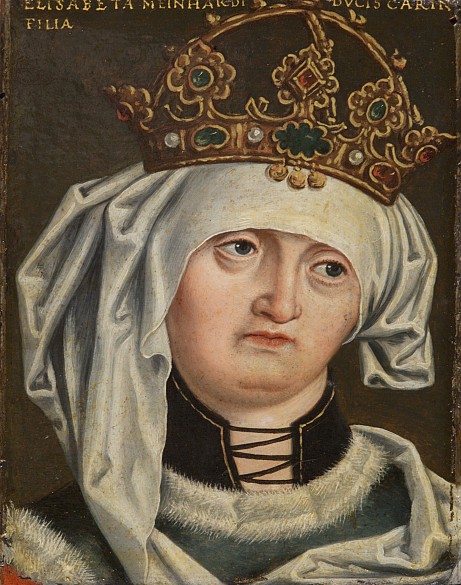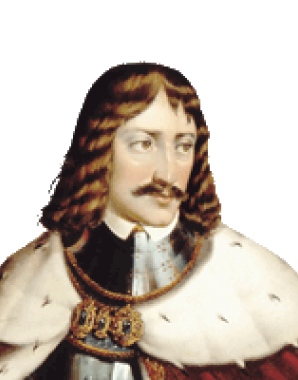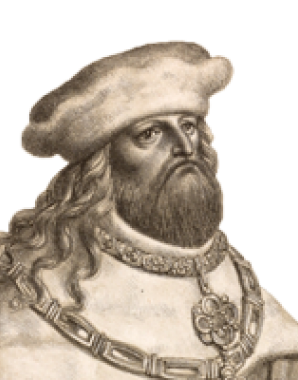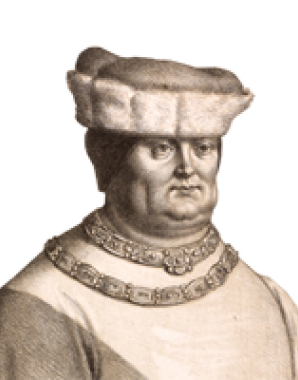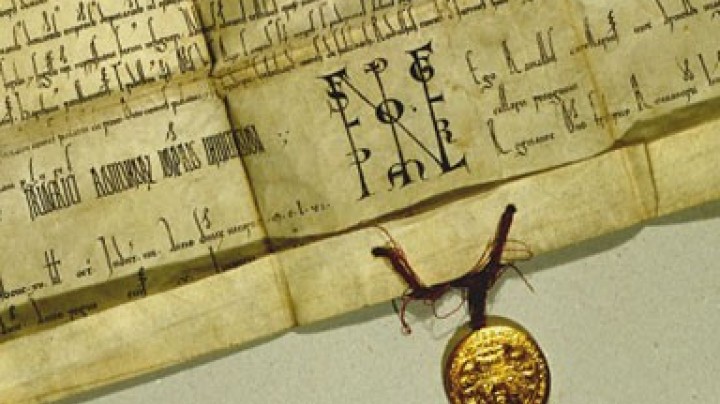Albrecht I: Marriage and offspring
Albrecht married Elisabeth of Gorizia-Tyrol (d. 1313) in 1274. This long and apparently happy marriage resulted in twenty-one children – the highest number of offspring from a Habsburg marriage in the long history of the dynasty.
Of this astonishingly large brood of twenty-one children, ten died at an early age. Albrecht attached great importance to the education of his children. His sons could read and write and even conduct a conversation in Latin, attainments that were uncommon among the feudal aristocracy of the time.
Albrecht’s eldest daughter Anna (before 1280–1327), as a pawn in her father’s aspirations to succeed to the thrones of the Empire and Bohemia, was married to the Margrave Hermann of Brandenburg and subsequently to Duke Henry VI of Silesia-Breslau.
Agnes (c. 1280–1364) was married to the last Hungarian king from the Arpad dynasty, Andrew III. Widowed after only a brief marriage, she was one of the founders of Königsfelden Monastery, where she dedicated herself to preserving the memory of her murdered father. Agnes is believed to be one of the first women to possess her own library.
Albrecht’s eldest son Rudolf III (1281–1307) was enfeoffed with Bohemia by his father in 1306 following the extinction of the Přemyslid dynasty. However, before he could establish his rule as king of Bohemia Rudolf died of pestilence on a campaign in 1307. He was married twice: after a brief union with Blanche of France he married the young widow of King Wenceslas II of Bohemia, Ryksa (Czech: Rejčka), who later called herself Elizabeth. Both marriages were without issue.
Albrecht’s second son Frederick I (1289–1330) set himself up as anti-king to the Wittelsbach emperor Louis IV. However, his ambitious aspirations came to nothing.
Elizabeth (c. 1293–1352) married Duke Frederick of Lorraine.
Leopold I (1290–1326) was the political decision-maker behind his weak brother Frederick. His early death prevented the latter from rising further.
Catherine (1295–1323) was initially promised to Emperor Henry VII from the Luxembourg dynasty, who died shortly before the marriage was due to be celebrated (1313). She was subsequently married to Duke Charles of Calabria in furtherance of her brothers’ interests in Italy.
Albrecht II (1298–1358) consolidated Habsburg rule in Austria and Styria following the death of his brothers, laying the foundations for the expansion of Habsburg dynastic power. The dynastic succession continued with his sons.
Henry (1298–1327), Albrecht’s twin, was overshadowed by his brothers. Taken prisoner at the Battle of Mühldorf, he was kept in the custody of King John of Bohemia. Soon after his release he died at a young age from his injuries.
It was with Otto the Merry (1301–1339) that the fraternal conflicts in the Habsburg dynasty began which were to dominate the following generations. Otto demanded a division of the paternal inheritance, a claim for which he found allies in the kings of Bohemia and Hungary, who had a salient interest in weakening the Habsburgs. The serious physical impairment of his elder brother Albrecht II (‘the Lame’) meant that Otto came to the fore. Following the extinction of the counts of Gorizia, Otto played a leading role in acquiring Carinthia and Carniola for the dynasty in 1335/36.
Otto’s first marriage to Elizabeth of Lower Bavaria resulted in two sons, Frederick II (1327–1344) and Leopold II (1328–1344), who had great prospects of ruling given the initial childlessness of Otto’s brother Albrecht II. However, both sons died young: Frederick, in thanks for whose birth his father had endowed the Cistercian abbey of Neuberg an der Mürz, died in 1344 at the age of only seventeen, for unexplained reasons. His younger brother Leopold was granted an even shorter life, dying before his brother. In both cases contemporary accounts contain speculations of a violent death.
Otto’s second wife, Anna of Luxembourg, the daughter of King John of Bohemia, died after a brief marriage at the age of only fifteen.
Albrecht’s youngest daughter Guta (nach 1302–1329) was originally intended to marry Henry of Lower Bavaria, as part of her father’s plans of rapprochement with his Wittelsbach rivals. These plans were dashed by opposition from the Bavarian Estates. She eventually married Count Louis IV of Öttingen.
